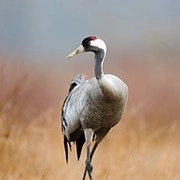Best Time for Korea’s Magic!

South Korea, a land of vibrant cities and serene landscapes, offers a unique experience with each passing season.
Whether you’re chasing cherry blossoms, beach festivals, or snowy slopes, timing your visit can elevate your trip. Here’s a detailed guide to help you decide.
Spring: March–May
Spring is ideal for mild weather (10–25°C / 50–77°F) and iconic cherry blossoms. The blooms start in mid-March on Jeju Island and peak in Seoul by early April. Don’t miss the Jinhae Gunhangje Festival (late March–early April, free entry), where over 350,000 cherry trees create pink canopies.
May brings the Lotus Lantern Festival in Seoul, featuring parades and lantern displays (free). Be prepared for hwangsa (yellow dust) in April; masks ($1–$3) are recommended.
Ancient wonders or modern marvels? Explore Beijing's unique experiences that blend history, culture, and innovation. Ready?
Vibrant waterfalls, towering cliffs, and charming villages—discover the magical beauty of the Faroe Islands.
Unlock Sicily's magic—history, food, and stunning landscapes await!
Bask in Antigua's beach paradise! With 365 stunning shores, discover the island's most breathtaking spots for sun, sand, and serenity.
Is Bahrain's capital a hidden gem? Discover Manama's thrilling mix of culture, luxury, and adventure!
Why La Palma is the Canary Islands' Best Kept Secret – Discover Its Hidden Wonders!
Summer: June–August
Summer is hot (30°C+/86°F+) and humid, with monsoon rains in July. Escape to Haeundae Beach in Busan or hike Seoraksan National Park ($3 entry). The Boryeong Mud Festival (mid-July, $15–$30 tickets) offers mud slides and live music.
Surfing lessons in Yangyang cost $40–$60. For culture, the Gangneung Danoje Festival (June, free) showcases shamanic rituals. Book beachside stays early—Busan hotels average $100–$150/night.
Fall: September–November
Fall’s crisp air (15–25°C / 59–77°F) and foliage make it a traveler favorite. Visit Seoraksan in October for fiery maple views ($9 park entry). October also hosts the Busan International Film Festival ($10–$50 per film) and Seoul Fashion Week (free outdoor shows).
The Andong Mask Dance Festival (late September, $5 entry) features traditional performances. Cafés in Ikseon-dong serve pumpkin lattes ($5) amid golden ginkgo trees.
Winter: December–February
Winter is cold (-5–5°C / 23–41°F) but magical for skiing and festivals. Yongpyong Ski Resort offers lift passes from $50/day, while the Pyeongchang Trout Festival (December–January, $10 entry) lets you ice-fish.
Celebrate Seollal (Lunar New Year, Jan/Feb) with tteokguk (rice cake soup) and folk games. Warm up in jjimjilbangs (saunas, $8–$15 entry) or explore Seoul’s Gyeongbokgung Palace ($3 entry) under snow.
Travel Tips
- Transport: Use the KTX train (Seoul to Busan: $50, 2.5 hours) or intercity buses ($10–$20).
- Accommodation: Budget guesthouses cost $20–$40/night; ski resorts range from $100–$300/night.
- Festivals: Book tickets 2–3 months early for major events like the Busan Film Festival.

Final Thoughts
South Korea dazzles in every season. Whether you’re sipping matcha under cherry blossoms or carving powder on Alpensia’s slopes, each visit promises unforgettable moments. Plan around your interests, and let South Korea’s seasons guide your adventure.

 · Travel team
· Travel team